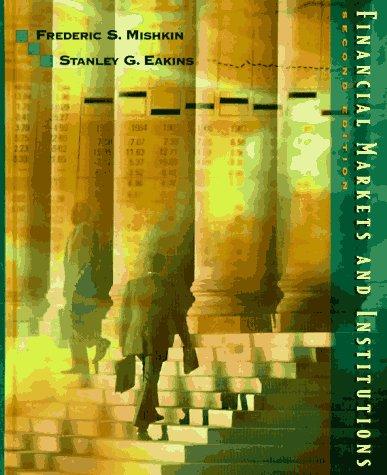Question
11.14 Dividends-Based Valuation of Common Equity. The Coca-Cola Company is a global soft drink beverage company (ticker: KO) that is a primary and direct competitor
11.14 Dividends-Based Valuation of Common Equity. The Coca-Cola Company is a global soft drink beverage company (ticker: KO) that is a primary and direct competitor with Starbucks. The following data for Coca-Cola include the actual amounts for 2015 and the projected amounts for Years 1 through 5 for comprehensive income and common shareholders equity (amounts in millions).
The market equity beta for Coca-Cola at the end of 2015 is 0.75. Assume that the risk-free interest rate is 3.0% and the market risk premium is 6.0%. Coca-Cola had 4,324 million shares outstanding at the end of 2015, when the share price was $42.96.
See the table below:
Actual Projected
2015 Year 1 Year 2 Year 3 Year 4 Year 5
Comprehensive income $ 2,954 $ 7,342 $ 7,575 $ 7,803 $ 8,039 $ 8,283
Common shareholders equity:
Paid-in Capital $ 15,776 $ 15,723 $ 16,279 $ 16,839 $ 17,392 $ 17,939
Retained Earnings 65,018 66,854 68,747 70,698 72,708 74,779
Treasury Stock (45,066) (45,952) ( 47,818) (49,797) (51,892) (54,107)
Accumulated Other
Comprehensive Income (10,174) (10,174) (10,174) (10,174) (10,174) (10,174)
Total Common Equity $ 25,554 $ 26,451 $ 27,035 $ 27,566 $ 28,033 $ 28,437
REQUIRED a. Use the CAPM to compute the required rate of return on common equity capital for Coca-Cola. b. Compute the weighted-average cost of capital for Coca-Cola as of the start of Year 1. At the end of 2015, Coca-Cola had $44,213 million in outstanding interest-bearing debt on the balance sheet and no preferred stock. Assume that the balance sheet value of Coca-Colas debt is approximately equal to the market value of the debt. Assume that at the start of Year 1, it will incur interest expense of 2.0% on debt capital and that its average tax rate will be 24.0%. Coca-Cola also had $210 million in equity capital from noncontrolling interests. Assume that this equity capital carries a 15.0% required rate of return. (For our forecasts, we assume noncontrolling interests receive dividends equal to the required rate of return each year.) c. Use the clean surplus accounting approach to derive the projected dividends for common shareholders for Years 1 through 5 based on the projected comprehensive income and shareholders equity amounts. (Throughout this problem, you can ignore dividends to noncontrolling interests.) d. Use the clean surplus accounting approach to project the continuing dividend to common shareholders in Year 6. Assume that the steady-state long-run growth rate will be 3% in Years 6 and beyond. e. Using the required rate of return on common equity from Requirement a as a discount rate, compute the sum of the present value of dividends to common shareholders for Coca-Cola for Years 1 through 5. f. Using the required rate of return on common equity from Requirement a as a discount rate and the long-run growth rate from Requirement d, compute the continuing value of Coca-Cola as of the beginning of Year 6 based on its continuing dividends in Years 6 and beyond. After computing continuing value, bring continuing value back to present value at the start of Year 1. g. Compute the value of a share of Coca-Cola common stock, as follows: (1) Compute the sum of the present value of dividends including the present value of continuing value. (2) Adjust the sum of the present value using the midyear discounting adjustment factor. (3) Compute the per-share value. h. Using the same set of forecast assumptions as before, recompute the value of Coca-Cola shares under two alternative scenarios. To quantify the sensitivity of your share value estimate for Coca-Cola to these variations in growth and discount rates, compare (in percentage terms) your value estimates under these two scenarios with your value estimate from Requirement g. Scenario 1: Assume that Coca-Colas long-run growth will be 2%, not 3% as before, and assume that its required rate of return on equity is 1 percentage point higher than the rate you computed using the CAPM in Requirement a. Scenario 2: Assume that Coca-Colas long-run growth will be 4%, not 3% as before, and assume that its required rate of return on equity is 1 percentage point lower than the rate you computed using the CAPM in Requirement a. i. What reasonable range of share values would you expect for Coca-Cola common stock? Where is the current price for Coca-Cola shares relative to this range? What do you recommend?
Step by Step Solution
There are 3 Steps involved in it
Step: 1

Get Instant Access to Expert-Tailored Solutions
See step-by-step solutions with expert insights and AI powered tools for academic success
Step: 2

Step: 3

Ace Your Homework with AI
Get the answers you need in no time with our AI-driven, step-by-step assistance
Get Started


